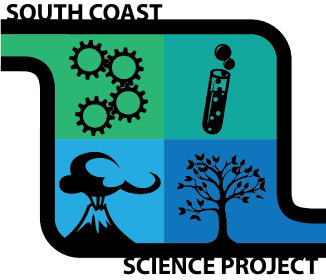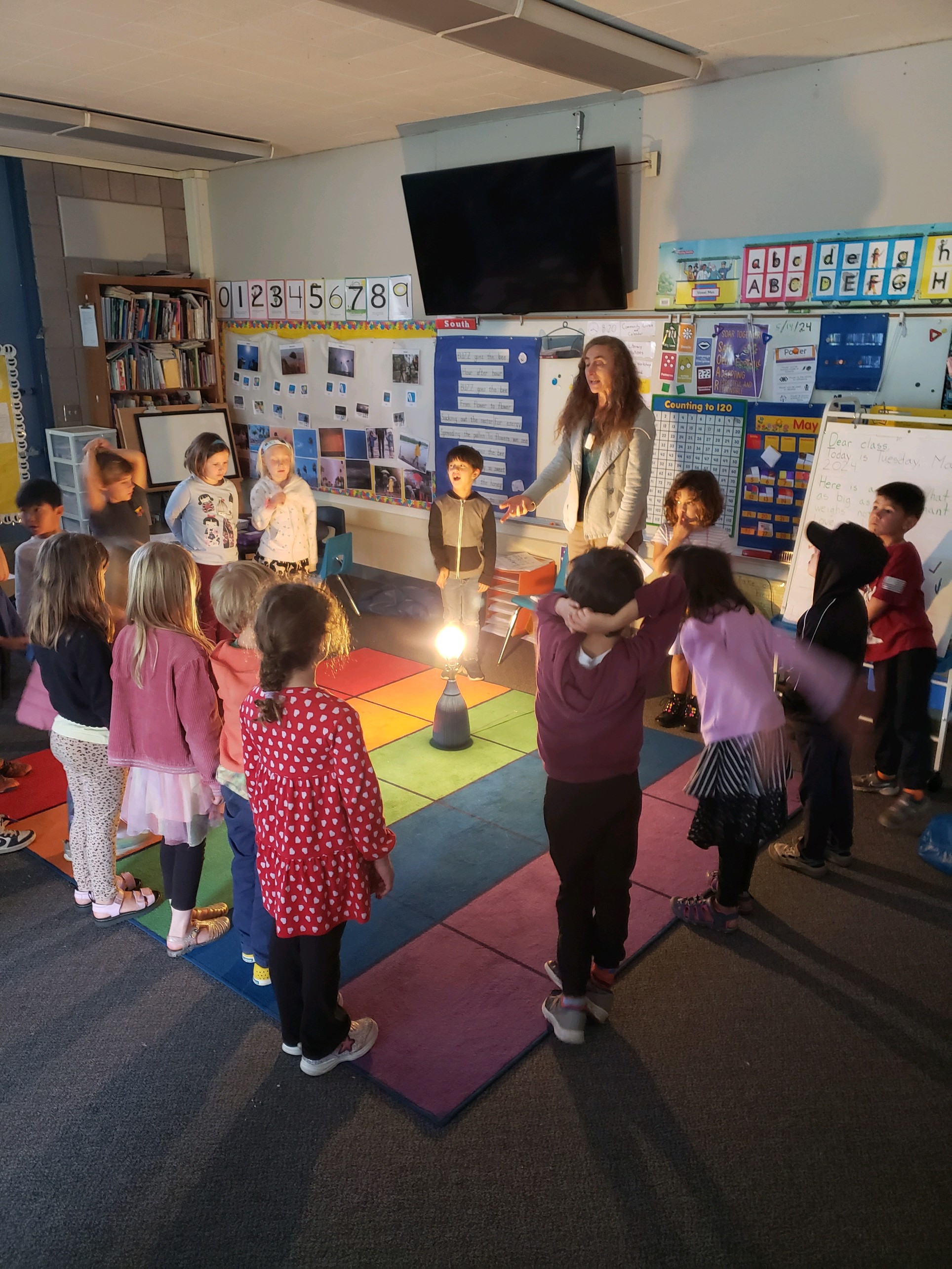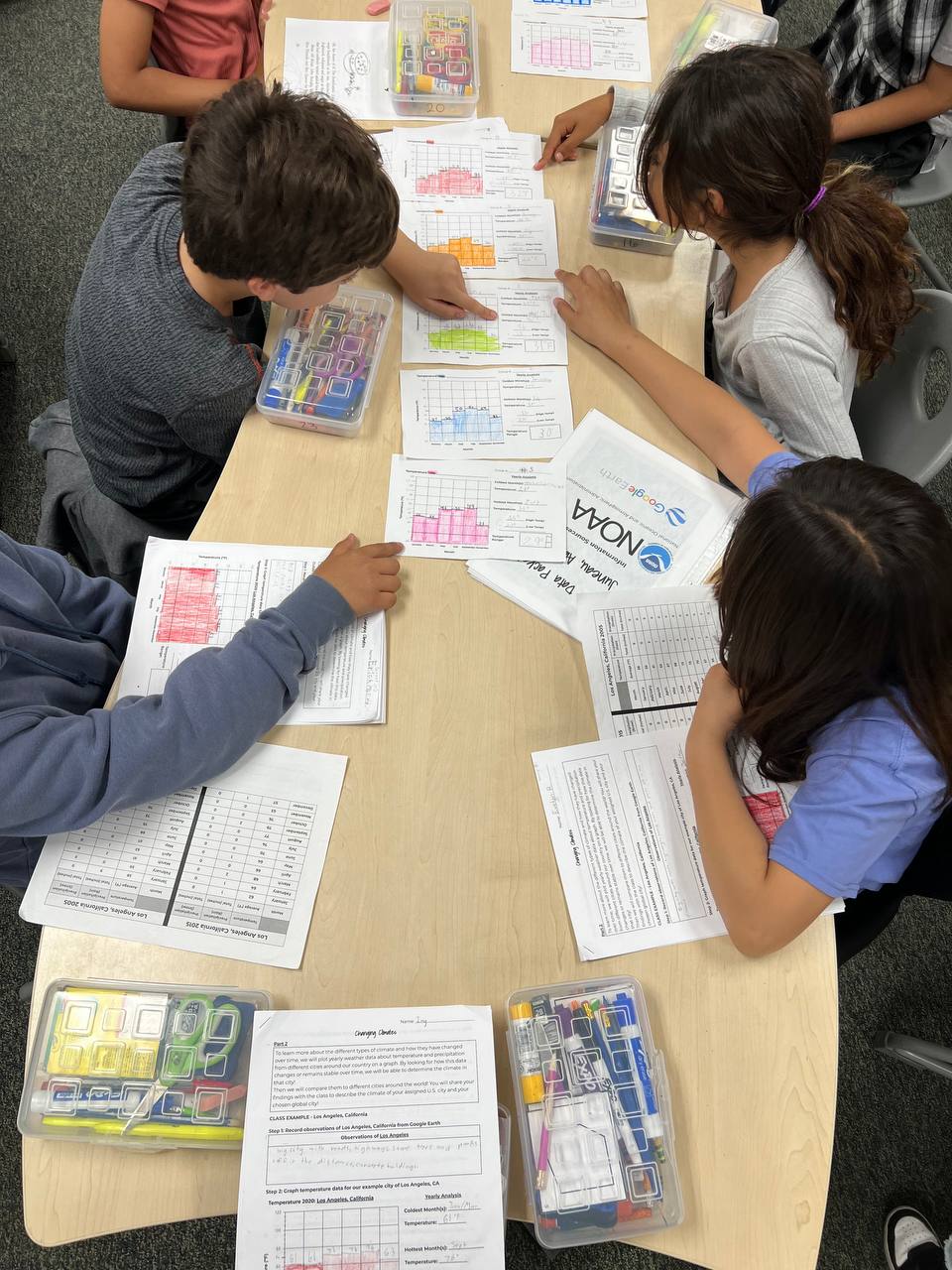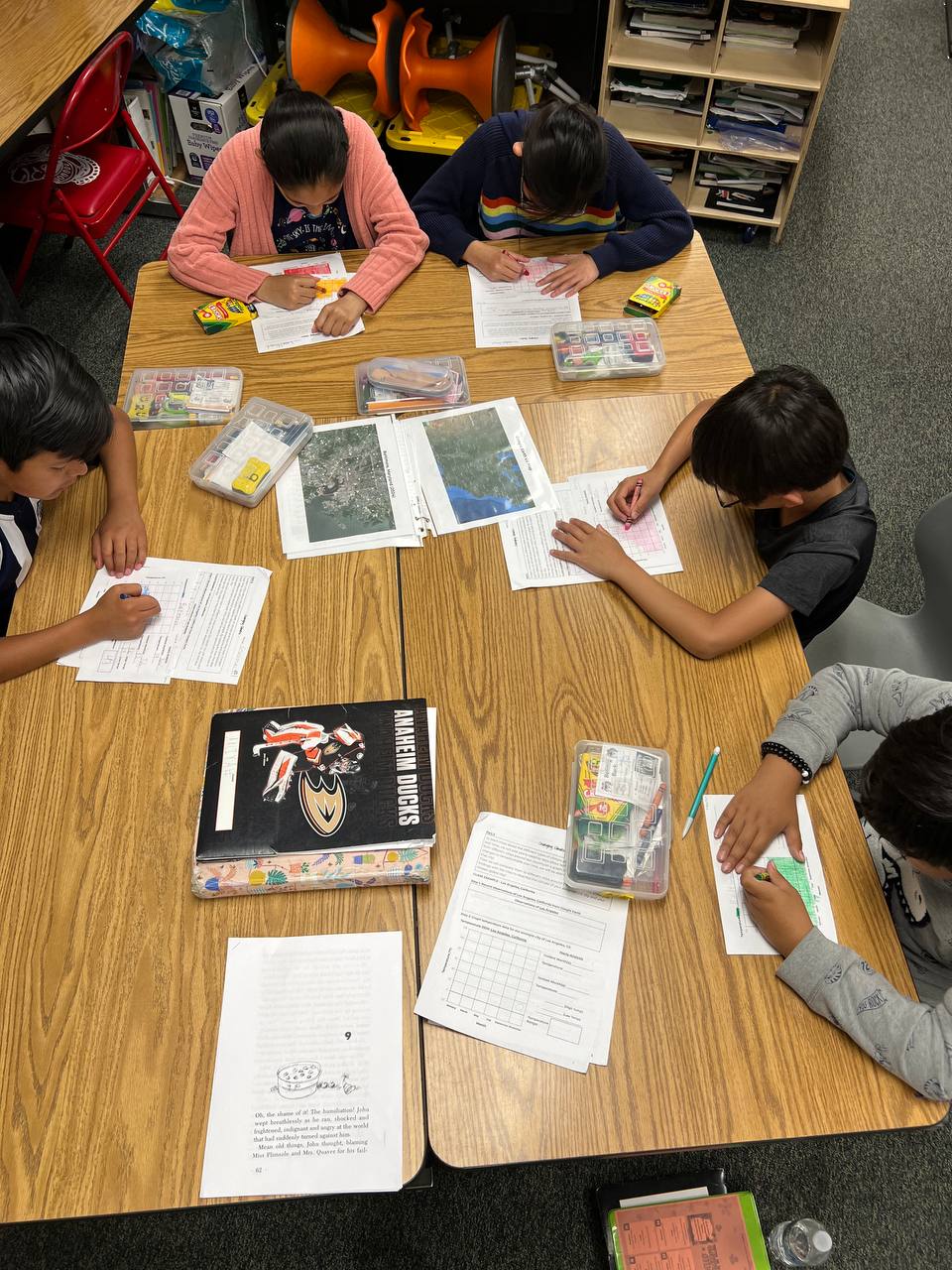The 2024 SCSP Summer Institute focused on concepts in Earth and Space Science (ESS1 & ESS2). The content of this institute will be repeated in 2030.
The 2024 SCSP Summer Institute focused on the Environmental Principles and Concepts across Disciplinary Core Ideas and Environmental Science (ESS3). The content of this institute will be repeated in 2031.
Conceptual Flows: Earth and Space Science
Our conceptual flows are diagrams that show one way that scientific concepts within a specific disciplinary core idea can connect and build. These diagrams include concepts from kindergarten through eighth grade and help guide our instruction for each Summer iInstitute.
Conceptual Flow Diagram |
Disciplinary Core Ideas |
NGSS Performance ExpectationsClick on linked PEs to see corresponding lessons. |
Year Presented |
|
ESS1: Earth's Place in the Universe
ESS2: Earth's Systems
|
1-ESS1-1, 1-ESS1-2 3-ESS2-1, 3-ESS2-2 5-ESS1-1, 5-ESS1-2 7th and 8th Grade PEs: MS-ESS1-1, MS-ESS1-2, MS-ESS1-3 |
Earth Science Summer 2024 |
|
|
ESS1: Earth's Place in the Universe
ESS2: Earth's Systems
ESS3: Earth and Human Activity
|
2-ESS1-1, 2-ESS2-2, 2-ESS2-3 3-ESS2-1, 3-ESS2-2 4-ESS1-1, 4-ESS2-1, 4-ESS2-2
5-ESS2-1, 5-ESS2-2
MS-ESS2-4, MS-ESS2-5, MS-ESS2-6
7th and 8th Grade PEs:
MS-ESS1-4, MS-ESS2-1, MS-ESS2-2, MS-ESS2-3
|
Earth Science Summer 2024 |
|
|
ESS1: Earth's Place in the Universe
ESS2: Earth's Systems
ESS3: Earth and Human Activity
|
2-ESS1-1, 2-ESS2-1 4-ESS3-1, 4-ESS3-2 5-ESS3-1 MS-ESS3-3, MS-ESS3-5 7th and 8th Grade PEs: MS-ESS3-1, MS-ESS3-2, MS-ESS3-4 |
Enviromental Science Summer 2025 |
Lessons: ESS1 - Earth's Place in the Universe
Lessons: ESS2 - Earth's Systems
Grade Level |
NGSS Performance Expectation(s) |
Lesson Title and Description |
Lesson Materials |
Presenter(s) |
|
K-ESS2-1 |
What's the Weather? In this lesson students will explore the local weather patterns on sunny, cloudy, foggy, rainy, stormy, and windy days. They will also learn how to analyze and interpret a month long calendar and a bar graph to see what the most common and least common local weather patterns are. Through guided discussions, students will also analyze and interpret the local weather of Big Bear, California to find the most and least common weather patterns.
|
Sammi Lambert Summer 2024 |
||
|
2-ESS2-2 |
What's New at the Slough? Students will make claims about what causes the water level in a local slough to fluctuate. They will complete a map of the slough, and will compare and contrast the structure and function of a slough and a pond. They will gather evidence from informational texts, videos, and demonstrations to revise and support their claims. Students will engage in argument, evaluate competing claims and use evidence to support and refute claims.
|
Patty Malone Summer 2024 |
||
| 3-ESS2-2 |
Climates in our Country In this lesson, students will be presented with weather (precipitation and temperature) data for an example city of Santa Barbara (this can easily be switched out to your city) and an assigned city. They will graph this data with support and analyze their graphs to determine how the weather has changed over a 25 year time period. Additionally they will construct a class map with all of their assigned cities’ data. They will combine this information with knowledge gained from a short story to learn about the Köppen climate classification system and classify each city as one of the five main climate types. Lastly, they will compare their assigned city to data for global cities to propose a vacation for families who are looking to experience a certain climate type. They will put all of this together in a short presentation that they will present to their class. *Classroom Tested by 2024 Lesson Study Participant* "This was a thoroughly engaging lesson that my students really enjoyed. They particularly enjoyed presenting their data. This lesson incorporated a great way to bridge science with math concepts through graphing." - Marla from Garden Grove Unified School District
|
Sammi Lambert Summer 2024 |
||
| MS-ESS2-4 |
Water Wonderland In this lesson, students will develop a model of the water cycle. Part 1 of the lesson starts with students thinking about why water is important to us, where we find water in the environment, and how water enters and leaves these water sources. Groups then generate an initial model containing the names of the water sources (ex: lake), arrows showing the flow of water, and at least the following scientific terms: precipitation, evaporation, solid, liquid, gas, and condensation. In Part 2 of the lesson, students watch two demonstrations that allows them to explore gravity and what happens when rain lands on a slope. They are introduced to ground water and the at least the following scientific terms: gravity, percolation, infiltration, and runoff. These ideas and terms are added to their models in addition, students highlight arrows in green in which gravity plays a role in the transportation of the water. Part 3 of the lesson, student watch another demonstration that allows them to explore the role of heat sources and sinks in the water cycle. Groups revise their model by adding orange arrows to show energy transfer during the water cycle. In addition, they add at least the following scientific terms to their model: humidity, melting, freezing, heat sources, and heat sinks. Part 4 of the lesson allows students to revisit the role of phase changes in the water cycle. Then they explore the role of plants and animals in the water cycle. Groups then add at least the following scientific terms to their model: transpiration and respiration. For Part 5 of the activity, students use their model to make a prediction to explain what happens when we pump groundwater. As a class, students complete a reading that allows them to learn about the local water system, verify their model, and check their prediction about pumping groundwater. This reading introduces the following scientific terms that students will add to their final model: watershed, sea level, aquifer, water table, sublimation, photosynthesis and deposition. The lesson concludes with groups adding the additional terms to their models and sharing their completed water cycle models with the class. |
Darby Feldwinn Hattie Elison Summer 2024 |




